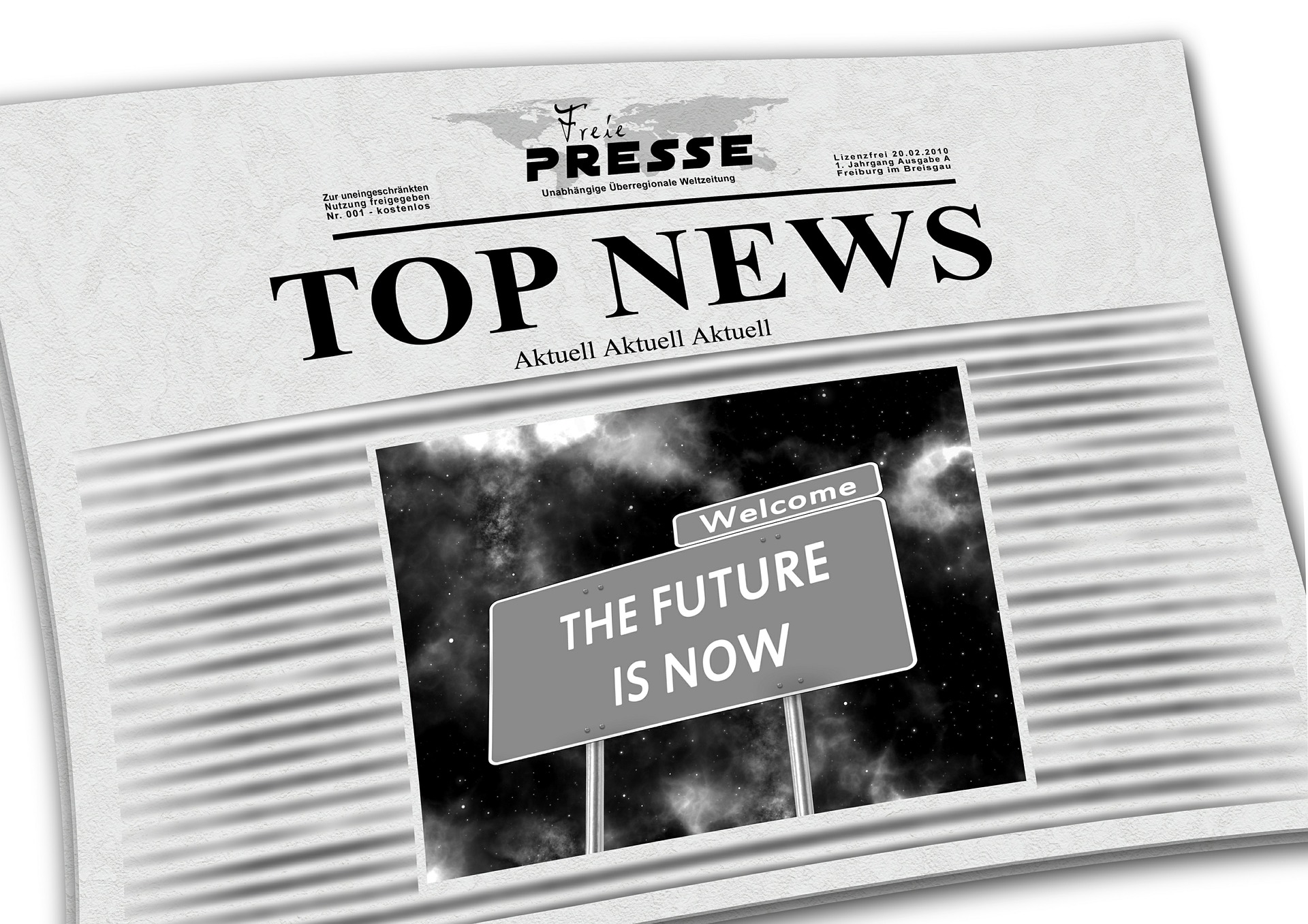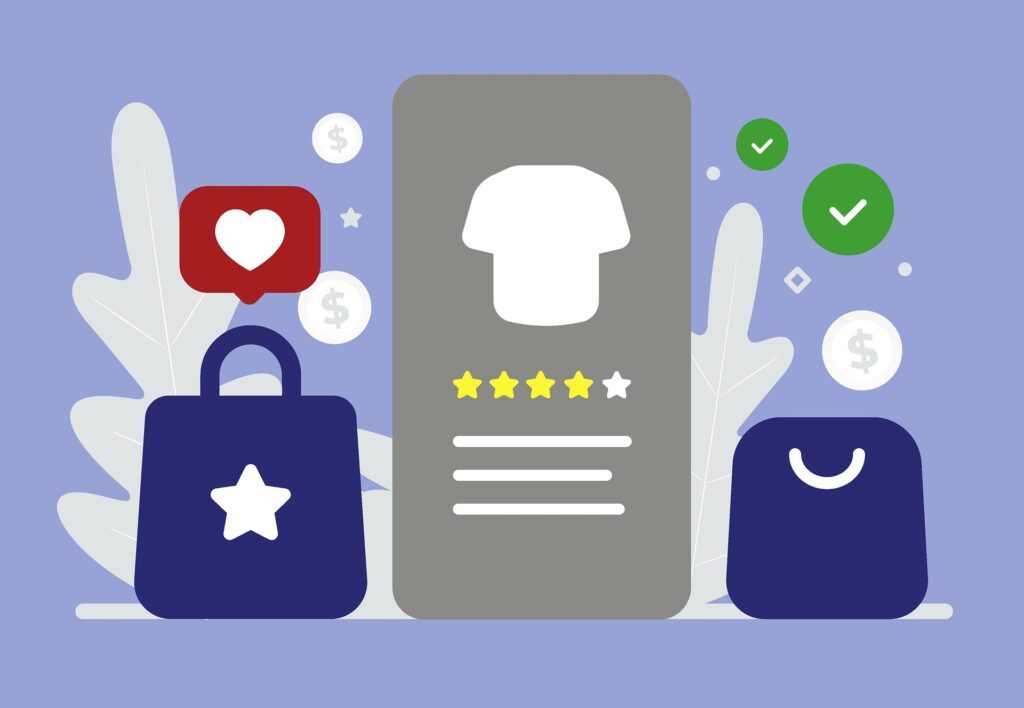Learn 6 proven ecommerce personalization tactics to boost conversions, retention, and customer experience. Discover how data, dynamic content, and personalized marketing drive real growth for modern ecommerce brands.
Key Takeaways
→ Behavior beats assumptions: Build ecommerce personalization around real customer behavior, not demographics.
→ Start simple, scale smart: Fix UX, use first‑party data, and expand with the right tools.
→ Make it feel personal: Tailor recommendations, emails, and loyalty programs to boost retention and revenue.
The Age of Ecommerce Personalization
Today’s online shoppers expect more than just a functioning storefront — they expect a tailored experience from the moment they land on your site.

More than 80% of consumers want ecommerce brands to recognize their preferences, behaviors, and intent in real time. Not next time. Not in the next email. Right now.
The brands dominating ecommerce aren’t just using personalization — they’re building entire ecosystems around it. From homepage recommendations to personalized email flows, dynamic product discovery, and loyalty programs that actually feel rewarding, ecommerce personalization is the engine of modern customer experience.
What Is Ecommerce Personalization?
Ecommerce personalization means tailoring the shopping experience to each visitor using behavior, preferences, and purchase history. From personalized product recommendations and dynamic promotions to custom checkout flows, personalization should touch every part of the customer journey.
This isn’t just putting a name in an email. It’s adapting product pages, search results, and marketing campaigns in real time based on what each customer actually wants.
What It’s Not
Slapping “Hi [First Name]” in an email? That’s 1998. Bombarding customers with irrelevant ads or assuming someone’s preferences from one gift purchase? Not personalization.
Real ecommerce personalization is contextual, multi-dimensional, and adaptive. It understands intent, not just identity.
Why it Matters in Customer Experience
Consumers now compare every store to Amazon, Netflix, and Spotify. If your experience feels generic, they bounce. Fast-growing companies earn 40% more revenue from personalization than their slower peers. For successful ecommerce, It’s both a trend and a survival strategy.
Building an Ecommerce Personalization Engine That Actually Works
Ecommerce personalization isn’t plug-and-play. It’s not magic. It’s a system — and systems need structure, tools, and rules. Too many brands blow budgets on personalization platforms only to deliver creepy experiences and broken journeys. You need both a strong foundation and discipline to maintain it.

Here’s how the smartest brands do it:
Start with the customer journey (not the tools)
Before you jump into AI-driven recommendations, dynamic banners, or personalization platforms with a hundred features, pause. Your first priority isn’t technology. It should be understanding how your customers actually shop.
That means studying your real user behavior:
- Watch session replays.
- Analyze heatmaps.
- Dive into funnel analytics.
- Interview support teams and customers.
Where are people getting stuck? When do they bounce? What content keeps them engaged? This intel tells you where and how ecommerce personalization should be applied.
Too many brands get excited about tools and forget the experience. They slap on personalized banners, but don’t realize customers never scroll that far. Or they personalize checkout flows, but overlook the broken product filter that’s stopping people from adding anything to cart.
Pro Tip: Never start with assumptions. Start with evidence. Let behavior be your blueprint for ecommerce personalization.
Fix broken UX before layering on fancy tech
If your site is slow, cluttered, or confusing, adding personalized elements won’t fix the problem; it’ll just personalize the pain.
Think of it this way: if your checkout crashes, then showing a user their favorite product in that flow just makes the failure feel more personal. If your mobile UX is broken, no amount of personalized banners will save the bounce rate.
Before investing in complex personalization tools, clean up the basics:
- Ensure fast page load speeds
- Simplify navigation and eliminate dead ends
- Streamline checkout to 1–2 steps (max)
- Make CTAs prominent, usable, and clear
- Test the mobile experience on actual devices, not emulators
Personalization should enhance a great experience—not try to cover up a bad one.
Mistake to avoid: Don’t mistake ecommerce personalization tech for personalization strategy. No tool can fix a messy user experience.
For a deeper dive into ecommerce speed optimization fundamentals, check out this guide on improving ecommerce site speed.
Centralize and use first-party data
First-party data is your ecommerce personalization power source. It’s the purchase history, browsing behavior, email engagement, customer service interactions, and loyalty redemptions that your business already owns. But too often, that data sits in silos, fragmented between platforms, departments, or tools.
To unlock true personalization, you need to consolidate that data into unified customer profiles that are:
- Accessible in real time
- Syncable across all touchpoints
- Continuously updated
A strong customer profile lets you deliver personalized content that actually makes sense. For example, someone who buys high-end skincare shouldn’t be shown entry-level promotions just because of their age or ZIP code.
Do this, not that:
Use: browsing behavior, purchase recency/frequency, AOV, category depth
Avoid: relying on age, gender, or job title as primary data points
Remember: demographics describe, but behavior predicts.
Segment intelligently and humanly
Effective segmentation doesn’t start in a CRM. It starts by observing how real people behave, then grouping them by need, intent, or shopping style — not just arbitrary traits like age or geography.
Here are smarter, behavior-based segments that fuel real personalization:
- The Loyalist: Buys full price, returns rarely
- The Deal Hunter: Only converts on promo
- The Returner: High purchase, high return rates
- The Gifter: Shops around holidays, buys in bursts
- The Lurker: High browse, low buy
Each one deserves a different tactic, message, and product experience.
But don’t forget the human filter. AI-driven segmentation can be powerful, but it can also be dumb. If your system recommends party supplies and condolence cards in the same cart, that’s not personalization — it’s alienation.
Remember: Use machines to scale. Use humans to sanity-check.
Choose tools that actually support your strategy
The ecommerce personalization market is noisy. From enterprise suites to lightweight Shopify apps, there are hundreds of tools promising smarter targeting, predictive AI, and dynamic content. But here’s the truth:
The best personalization platform is the one your team will actually use.
If your team doesn’t have the time or skillset to fully implement a personalization engine, then that expensive enterprise license is just a budget sink. Start with tools that fit your current workflows and can scale with you.
Your core personalization tech stack should include:
- Data orchestration layer: To sync customer profiles across platforms (like Segment or Klaviyo CDP)
- Segmentation engine: To group users dynamically based on real-time behavior
- Dynamic content tools: For swapping banners, products, and messages on the fly
- AI product discovery/chatbots: For guided, contextual shopping experiences
- Testing suite: A/B testing tools to validate what’s actually working
Start small, measure aggressively, and expand your toolkit as your strategy matures. The right personalization capabilities ensure your team can execute quickly without developer bottlenecks.
Reminder: Fancy tools won’t help you if you haven’t nailed the strategy first. Get the foundation right, then amplify with tech.
For a deeper breakdown of how structure impacts UX, navigation, and performance, check out this guide to high-performing Shopify website structure.
6 Ecommerce Personalization Tactics That Drive Results
The following personalization methods are among the most effective in boosting conversions, increasing average order value, and improving retention when implemented with the right strategy and data.

Tactic #1: Personalized Product Recommendations
Product recommendations are your revenue engine. Get them right, and average order value soars while customers feel like you get them.
| Area | Personalization Focus | Strategy & Tips | Outcome / Best Practices |
| Homepage | New users need discovery; returners want continuity | – Show bestsellers to first-timers- Resurface recent views or favored categories for returners | Use recency + frequency- Avoid reacting to outdated clicks |
| Product Pages | Boost AOV with relevant add-ons | – “Frequently bought together” > “You might also like”- Match suggestions to price sensitivity | Premium shoppers → premium bundles- Value buyers → deals & kits |
| Checkout | Final shot at relevant upsells | – Suggest low-cost, add-on items- Keep it subtle and focused | Max 3 suggestions- Prioritize relevance over variety |
| Cross-sells vs. Upsells | Complement vs. upgrade intelligently | – Cross-sell later (e.g. post-browse)- Upsell based on value awareness | Avoid pushing high-end to bargain shoppers- Let behavior guide timing |
Tactic #2: Dynamic Content Across Touchpoints
Ecommerce personalization shapes your entire online shopping experience. Dynamic content makes your ecommerce site adapt in real time, creating a journey that feels alive.
| Area | Personalization Focus | Strategy & Tips | Outcome / Best Practices |
| Geolocation-Based Offers | Adapt content to local weather, events, or regions | – Adjust visuals and products by location- Tie promotions to local holidays or events | – Boosts relevance- Great for seasonal or regional demand spikes |
| Device-Specific UX | Match experience to mobile vs. desktop behavior | – Mobile: fast, visual, minimal steps- Desktop: detailed content, comparisons | – Improves conversion by meeting UX expectations per device |
| Banners, Sliders, Overlays | Serve contextual offers based on customer stage | – New: welcome promos- Returners: restocks, updates- Abandoners: gentle nudges | – 1 dynamic banner > multiple generic ones- Avoid promo fatigue |
Tactic #3: Create Personalized Email Campaigns
Email is still one of the most powerful conversion tools in ecommerce — when it’s not lazily blasting generic coupons to everyone on your list. The difference between annoying and effective? Personalization rooted in behavior.
| Area | Personalization Focus | Strategy & Tips | Outcome / Best Practices |
| Abandoned Cart Flows | Tailor based on who abandoned and what was in the cart | – Adjust message tone by customer type (new vs. loyal)- Time follow-ups based on behavior- Use value-based offers or cross-sells | – Higher recovery rates – Avoid generic messages |
| Retargeting Ads | Adapt ads to behavior and intent—not just product views | – Show alternatives or bundles- Respect frequency caps- Exclude recent buyers | – Prevents ad fatigue – Drives re-engagement without creepiness |
| Behavioral Triggers & Content | Respond to customer actions with contextual messages | – Trigger flows from downloads, browsing patterns, gift buys- Segment follow-ups with relevant content or offers | – Increases open + click-through rates – Builds trust and relevance |
These micro-moments add up. It’s not about sending more emails—it’s about sending smarter ones.
Tactic #4: Smarter Product Discovery
Most customers don’t come to your online store knowing exactly what they want. That’s your cue to provide personalized guidance, not guess. Good discovery tools feel helpful. Great ones feel like magic.
| Area | Personalization Focus | Strategy & Tips | Outcome / Best Practices |
| Guided Quizzes | Help users self-identify needs while capturing data | – Keep quizzes short, visual, and benefit-driven – Use answers to fuel product bundles or recommendations | – Increases engagement & conversions – Builds zero-party data |
| Semantic Search | Understand user intent, not just keywords | – Return curated results based on context (e.g., events, needs) – Weight results based on past behavior or preferences | – Improves relevance – Helps shoppers discover products faster |
| User-Generated Content | Show relatable reviews to boost trust | – Tailor reviews based on customer type or use case – Prioritize relevance over volume | – Builds confidence – Supports decision-making with targeted social proof |
When you personalize product discovery, you shorten the path to purchase and make it feel effortless.
Tactic #5: Loyalty and Retention Personalization
Retention is where the real profits live—and yet so many loyalty programs feel like a dusty punch card from 2006. Modern retention strategies are data-driven, dynamic, and personal.
| Area | Personalization Focus | Strategy & Tips | Outcome / Best Practices |
| Personalized Loyalty Programs | Adapt loyalty experiences to different engagement types | – Offer multiple paths: purchase, referral, engagement – Let users choose rewards: discounts, access, donations, etc. | – Increase customer participation – Matches rewards with motivation |
| Data-Driven Loyalty Segmentation | Use loyalty behavior to drive targeted outreach | – Segment by earn/redeem patterns – Trigger messages like milestone alerts, low-balance perks, or inactivity countdowns | – Drives reactivation – Makes point-based messaging feel relevant |
| Targeted VIP Perks | Tailor VIP experiences by value and behavior | – Use preferences to offer early access, exclusive sales, or high-touch support | – Builds long-term brand loyalty – Increases LTV through customized high-tier perks |
When you personalize perks, VIP status actually feels valuable—instead of just being a slightly shinier badge.
Tactic #6: Personalization in Ecommerce for Returning Visitors
You’ve already won them over once. Don’t make them start over every time they come back.
Let Users Pick Up Where They Left Off
Nothing kills momentum like lost carts, forgotten filters, or empty wishlists. Your site should feel like a personal workspace, not a reset button.
Show recently viewed items, saved preferences, and shopping cart contents right away. Even a “Welcome back—still thinking about these?” message goes a long way in making return visitors feel seen.
Dynamic Re-Engagement Blocks
Returning customers don’t need your elevator pitch again. They need progress.
Use dynamic blocks on your homepage and category pages to highlight what’s new since their last visit. Feature restocked favorites, price drops, or trending items in their usual categories.
Make their return feel purposeful, not like déjà vu.
Smart Recently Viewed & Saved Product Feeds
Yes, every site has these. But most implement them like an afterthought.
Make your feed smarter. Group recently viewed products by category. If something is out of stock, show similar alternatives. Layer in urgency—“Low stock,” “Back in stock,” or “Trending now”—based on real-time data.
This isn’t just convenience. It’s conversion fuel.
Advanced and Emerging Personalization Trends
The future of ecommerce personalization isn’t on the horizon—it’s already here, quietly reshaping customer expectations. Here’s a streamlined look at the trends that are defining the next wave.

Omnichannel Personalization
Customers expect a unified experience across mobile, desktop, and in-store. Omnichannel personalization ensures that carts, conversations, and preferences follow them wherever they shop.
Action step: Break internal silos and build shared customer profiles that update in real time.
Privacy-First Personalization
With third-party cookies crumbling, brands must shift to first- and zero-party data—information willingly shared by users via quizzes, preferences, or interactions.
Action step: Use progressive profiling to build trust and collect data gradually.
Predictive Personalization with Real-Time Data
Move from reactive to proactive. Predict what customers need before they ask using behavior patterns, seasons, and intent signals.
Example: A customer who buys protein powder every 30 days? Offer a refill at day 25, not after.
AI Powered Personalization
AI now goes beyond recommendations. It reads context, intent, even tone. Natural language models power chatbots that understand whether someone’s shopping for a gift or themselves.
Reminder: Use AI to scale empathy, not just automation.
Visual and Image Personalization
Static visuals are done. Customers want to see products in settings that match their life. AR and visual search personalize the experience further.
Example: Let shoppers upload inspiration photos or “try on” products in their space.
Personalized Messaging Across Channels
Email, SMS, in-app, and push should all personalize differently. Email can be rich and narrative. SMS must be brief and urgent. In-app and push need contextual timing.
Key rule: Match message style to platform behavior, or risk getting ignored—or worse, unsubscribed.
Personalization by Purchase Intent
Not all shoppers are ready to buy. Segment by intent—high, medium, low—and personalize accordingly.
- High intent: Offer trust-building elements like reviews and guarantees.
- Medium intent: Use urgency, scarcity, or exclusivity.
- Low intent: Provide education and inspiration, not pressure.
Also: more isn’t always better. Adding the wrong apps can tank your store’s performance. Here’s how to choose apps without breaking your theme or slowing down your site.
Final Word: Ecommerce Personalization Is No Longer Optional
Your competitors are already personalizing, and your customers expect it every time they shop. They’re not comparing you to other brands in your niche; they’re comparing you to Amazon, Netflix, and Spotify, where every experience feels tailored to them.

The price of inaction? Irrelevance. With over 80% of consumers expecting personalized experiences, and half of Gen Z dropping a brand if it feels generic, one-size-fits-all messaging doesn’t just fall flat — it disappears.
But here’s the good news — you don’t have to be perfect. You just have to start. Your first attempts might be simple or even a little rough, but iteration beats hesitation. The tools are affordable, the data is already in your system, and the roadmap is right here. You already have what you need to deliver personalized experiences that customers remember.
Pick one tactic. Personalize an email. Adjust a homepage. Test a recommendation block. Measure, learn, and repeat.
The brands winning today are the ones that started yesterday. Don’t wait for a perfect plan — just take the first step. Because while you’re thinking about it, your competitors are already turning data into deeper relationships.
The future of ecommerce is personal. Make sure your store feels that way.
Ready to put your ecommerce personalization strategies into motion?
Before you dive in, make sure your site is fast, optimized, and built to handle dynamic experiences. Hyperspeed helps ecommerce brands improve site speed performance and reduce friction.
Make your store faster starting today.
Compare how fast your store is to a huge sample of other stores. Get benchmarked and find out where you can improve your speed to make more sales. How fast is your Shopify store?
FAQ
What is ecommerce personalization and why is it essential for ecommerce growth?
Ecommerce personalization tailors the shopping experience using customer behavior, preferences, and first-party data. It improves customer experience, boosts conversions, and drives loyalty by showing relevant content, product recommendations, and personalized marketing.
How can I effectively implement ecommerce personalization tactics on my store?
Start with an ecommerce strategy grounded in first-party data. Use dynamic content, personalized product recommendations, and checkout personalization. Segment customers by behavior to deliver upsell personalization and targeted offers across email, site, and retargeting ads.
What are examples of ecommerce personalization tactics that increase conversions?
Examples of ecommerce personalization tactics include product detail page recommendations, abandoned cart email flows, personalized email campaigns, loyalty program segmentation, and ai chatbots. These improve average order value and enhance product discovery.
How does first-party data improve personalized marketing efforts?
First-party data enables accurate personalized recommendations, better abandoned cart emails, and data-driven loyalty campaigns. It helps segment customers by behavior, allowing ecommerce brands to tailor personalization tactics that reflect true customer preferences.
Why is product discovery and user-generated content important for personalization?
Product discovery tools like guided quizzes and semantic search personalize the shopping journey. User-generated content, when tailored to customer segments, builds trust. Together, they support ecommerce personalization and drive stronger customer experience outcomes.




